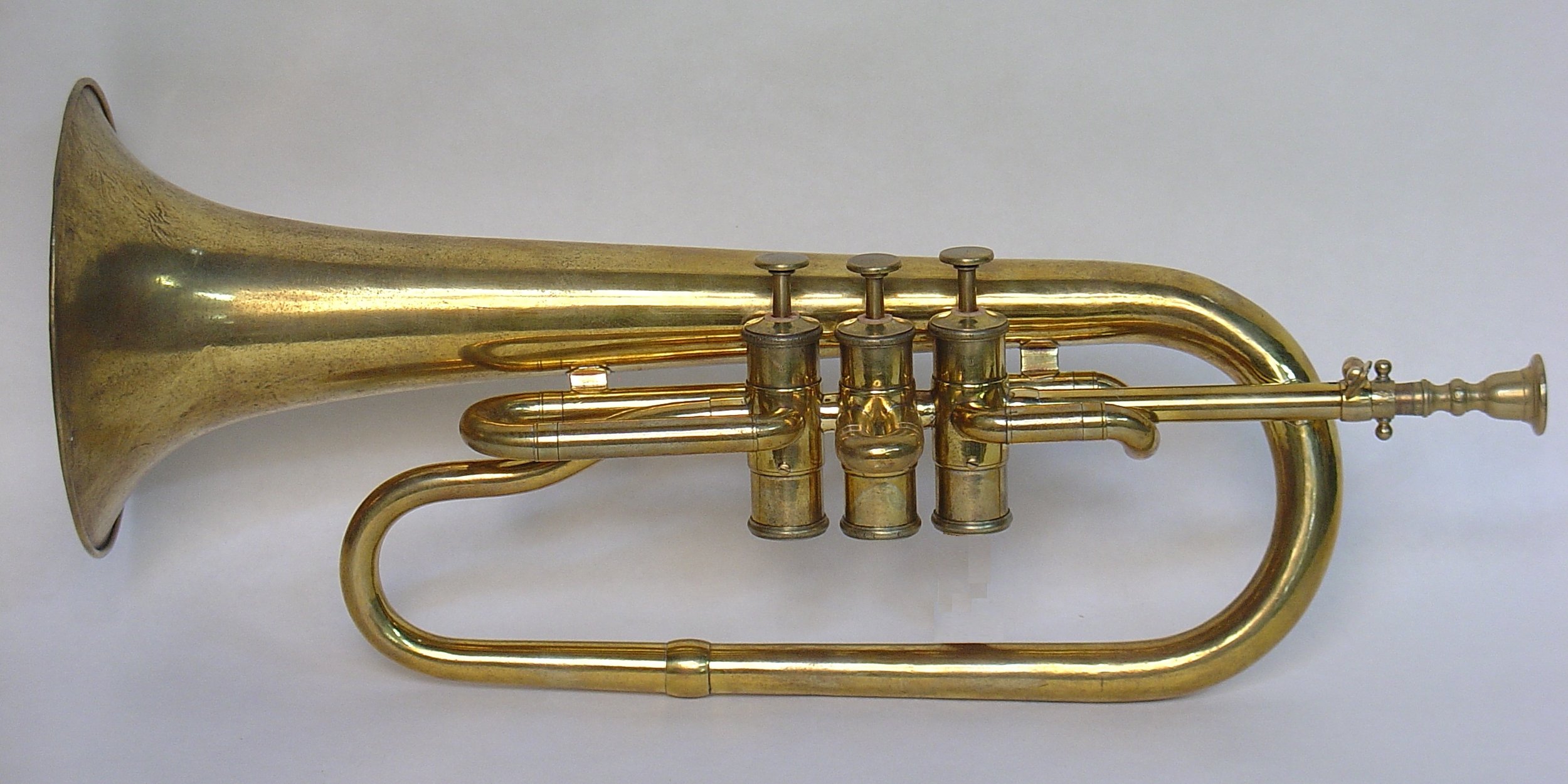Saxhorn in C by T.E. Benoit, New Orleans
Thomas E. Benoit emigrated from France to New Orleans, Louisiana in 1832 where he was in the business of selling sheet music and musical instruments that he had imported from France. By the late 1840s, he was publishing music as well. It is not known if he is the same Benoit that was in partnership with Piatet in Lyon, France during these same years, but it seems likely that he is a relative. He advertised in New Orleans newspapers throughout the 1840s, sometimes mentioning brass instruments, such as in the New Orleans Bee on February 19, 1842 illustrated below. Also, in the Jeffersonian Republican several times during 1846, announcing musical instruments for sale, just off the ship from France. In US census, both 1840 and 1850, he is listed with wife and three children. He travelled back to France at least once before 1850 and the business in New Orleans was taken over by A. Elie & Chassaignac by 1857. In an 1861 city directory, he is listed at a music store in New Orleans, but nothing has been found in later years.
This appears to be the earliest brass instrument to have been sold in New Orleans that is known to exist today. This Saxhorn was almost certainly made by Gautrot in Paris and the name "Benoit" has an even more important place in history than as a music merchant. In a patent infringement case brought against Gautrot by Adolphe Sax in 1846, Gautrot makes the unlikely claim that he was importing the counterfeit Saxhorns from Benoit of New Orleans. Among the evidence provided by Sax is a letter dated June, 1843, in which Benoit is requesting to purchase various brass instruments from Gautrot. This instrument looks very much like Sax's earliest Saxhorns including the design of the Berliner piston valves.
Click on image below for larger view.
As can be seen in the photos, this instrument was found in very rough and deteriorated condition. The interesting history here makes it worth all efforts to preserve and restore. It seems odd that this Saxhorn is pitched in C rather than the more common Bb. It is well known that New Orleans had several brass bands in the 1840s and we would expect that they would prefer instruments in Eb and Bb. Instruments pitched in C are typically intended for use in the parlor or church to play along with the piano or organ and perhaps that was the intended place for this one. This instrument is 15 7/8" long with bell diameter measuring 6" and bore .429". The stamp on the bell reads: "(T).E. Benoit/New Orleans".







